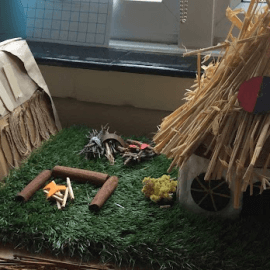Curriculum Intent
Design and Technology at St Joan of Arc is an inspiring subject which teaches children the practical skills of creativity, resourcefulness, authenticity and imagination. Our school’s Design and Technology is based around the Design and Technology Association’s ‘Project on a Page’ scheme of work, which aims to implement the National Curriculum for D&T in an imaginative way, based on universal principles of effective teaching and learning. Research, as well as discussion with the children at St Joan of Arc, suggests that D&T is one of primary-aged children’s favourite subjects. Projects on a Page maximises their enjoyment by providing scope for teachers to meet children’s needs and interests through creative and motivating projects within a range of contexts, providing a number of advantages such as:
- Flexibility – in discussion with the children, decisions about which products to design and make, who they are for and what purposes they serve will be made.
- Links to cross-curricular topics and themes are made through a greater emphasis on making links to other National Curriculum subjects. Projects on a Page ensures that D&T makes a high-quality contribution to a broad and balanced primary curriculum, also building on high standards in English and mathematics.
- Essentials of good practice in DT are taught to ensure that children receive a genuine experience.
Curriculum Implementation
At the heart of the subject is the designing and making process. The scheme of work ensures that children, from Nursery to Year 6, make and evaluate products using the broad range of materials and components specified in the statutory requirements. These include using construction materials, textiles, food, mechanical components and, in Key Stage 2, electrical components. Projects encompass a range of possible resources to use including tools, equipment and materials adapted appropriately to meet the needs of the children in a safe and enjoyable way.
Progression and coverage of the National Curriculum programmes of study for Key Stages 1 and 2 is provided, building on what children have previously learnt and summarising what they will learn through each project. This provides an appropriate expectation for children’s learning according to their ages. Within this are three broad types of D&T activity: investigative and evaluative activities, focused tasks and ‘Design, Make and Evaluate’ assignments. Children cover three D&T units across each school year, including one food-based unit. Where appropriate, these units are sometimes taught across 1-2 days rather than weekly lessons.
Design and Technology Curriculum Impact
Within the subject, children are able to solve real and relevant problems within varied contexts with links to the real world and other curriculum areas, for example mathematics, English, science, the humanities and art. Children consider their needs, as well as those of others, undertaking enterprising tasks which require innovation and resourcefulness. By evaluating past and present design and technology, their understanding of daily life and the wider world is enhanced which, in turn, fosters their contribution to the well-being of culture and society.
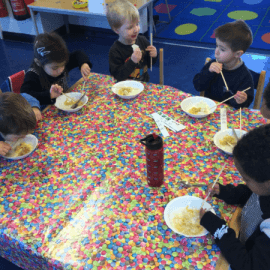
Children in Nursery sampling traditional food during Chinese New Year.
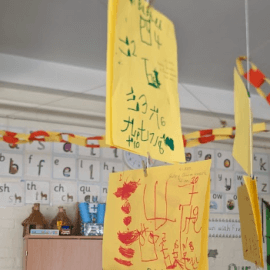
Reception children made cards using Chinese calligraphy.
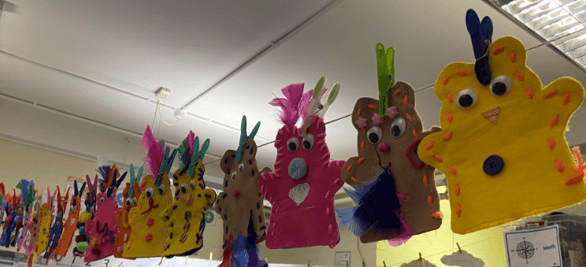
Puppets sewn by Year 1 children to complement work in English.
 Year 3 made Tudor houses which complemented their topic of the Great Fire of London
Year 3 made Tudor houses which complemented their topic of the Great Fire of London
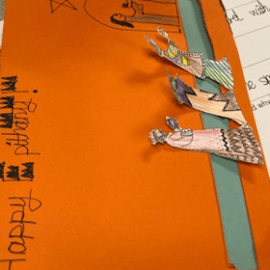
Year 4 made Epiphany cards using levers which complemented Religious Education.
